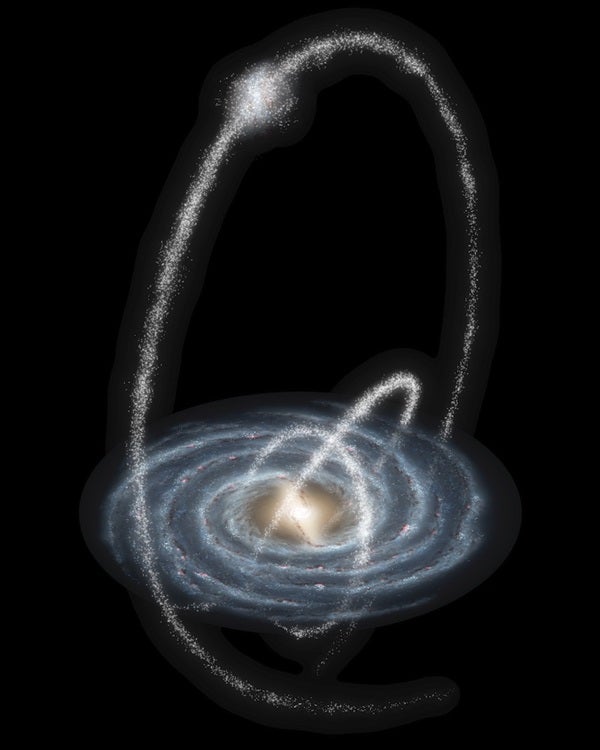Q: Is the dark matter shape of the Milky Way the same as the luminous matter shape?
A: Determining where dark matter lies is a difficult task, since we cannot observe it directly. Astronomers can only infer its presence from the motions of stars in the galaxy, which makes it difficult to determine a precise shape. Comparatively, it’s pretty easy to figure out how stars within the Milky Way Galaxy are distributed (i.e., most are in a disk), since we can observe them.
One of the most accurate ways to determine the dark matter shape of a galaxy is to trace the motion of satellite galaxies as they orbit their host galaxy. This is easiest to do for satellite galaxies that have been torn apart by the host galaxy. One of the most famous for the Milky Way is the Sagittarius Dwarf Galaxy. Some 70,000 light-years away, Sagittarius’ bundle of stars has been shredded and stretched into a thin stream of stars around the Milky Way. While the orbits of other, less-disrupted galaxies and star clusters may seem ideal for measuring the distribution of dark matter in the Milky Way, their timetables are much too slow for human lifetimes. But streams like Sagittarius have their recent orbits drawn into their shape.
The latest models of Sagittarius and other streams suggest that the Milky Way’s dark halo has a shape that changes depending on the distance from the center of the galaxy. In the inner regions, close to the disk, the dark matter halo appears to be a flattened sphere, like a football, with the long axis pointing in the direction of the disk. But as one moves outwards, the halo flips so the football is balanced on one of its points as the galaxy swirls around it.
So, in summary, the answer to the question is: No, the dark matter and the luminous matter have rather different shapes.










